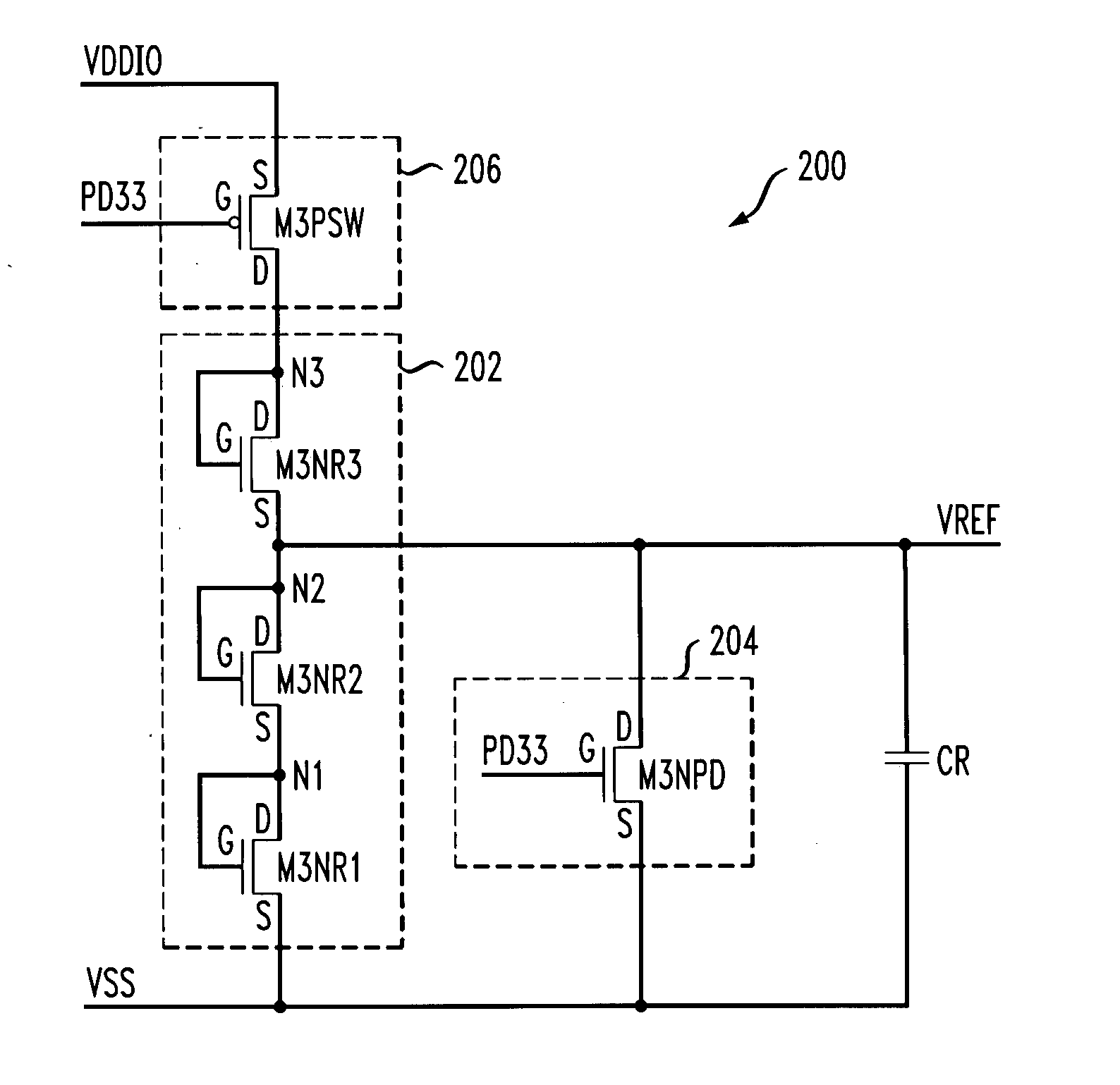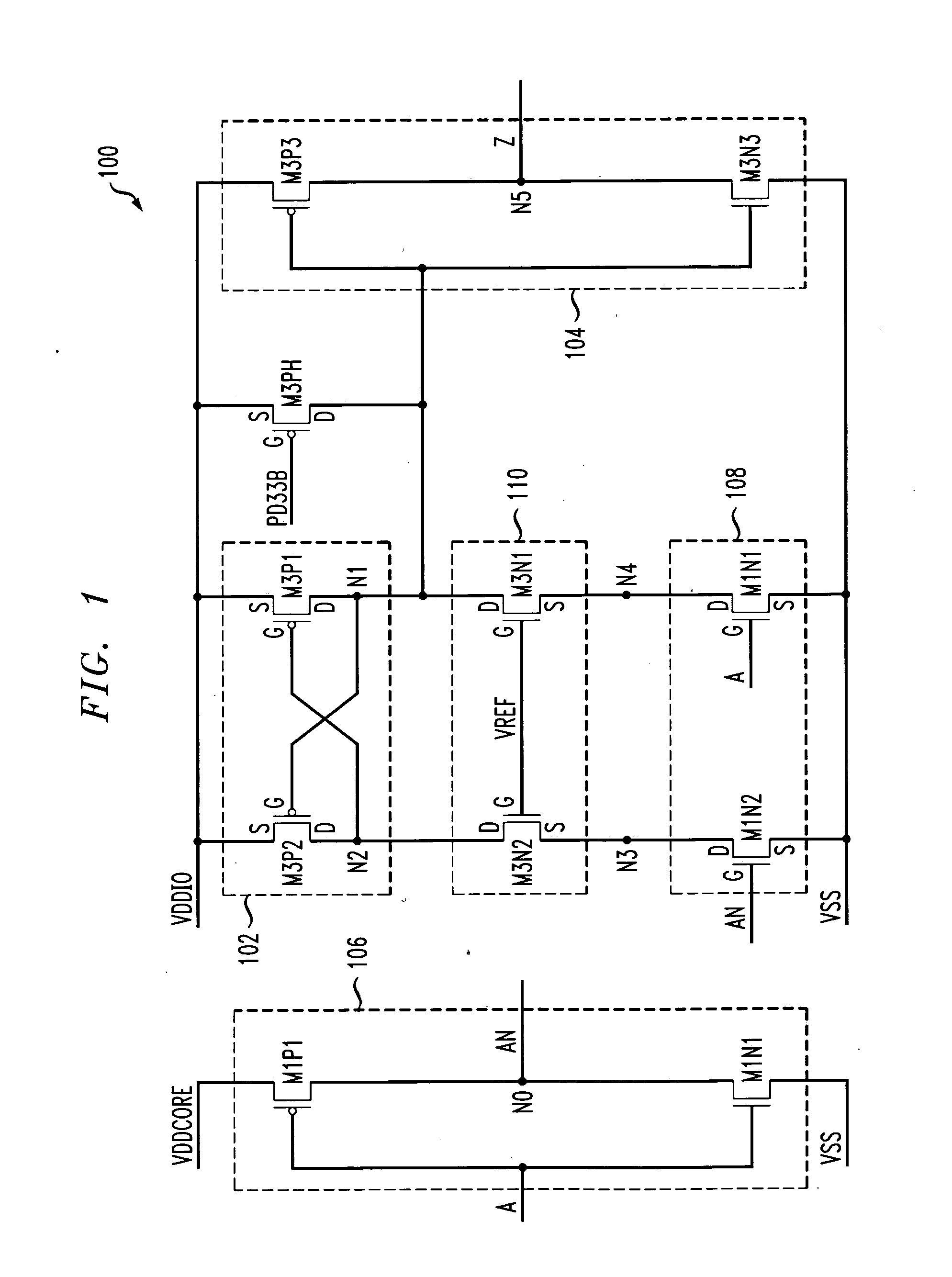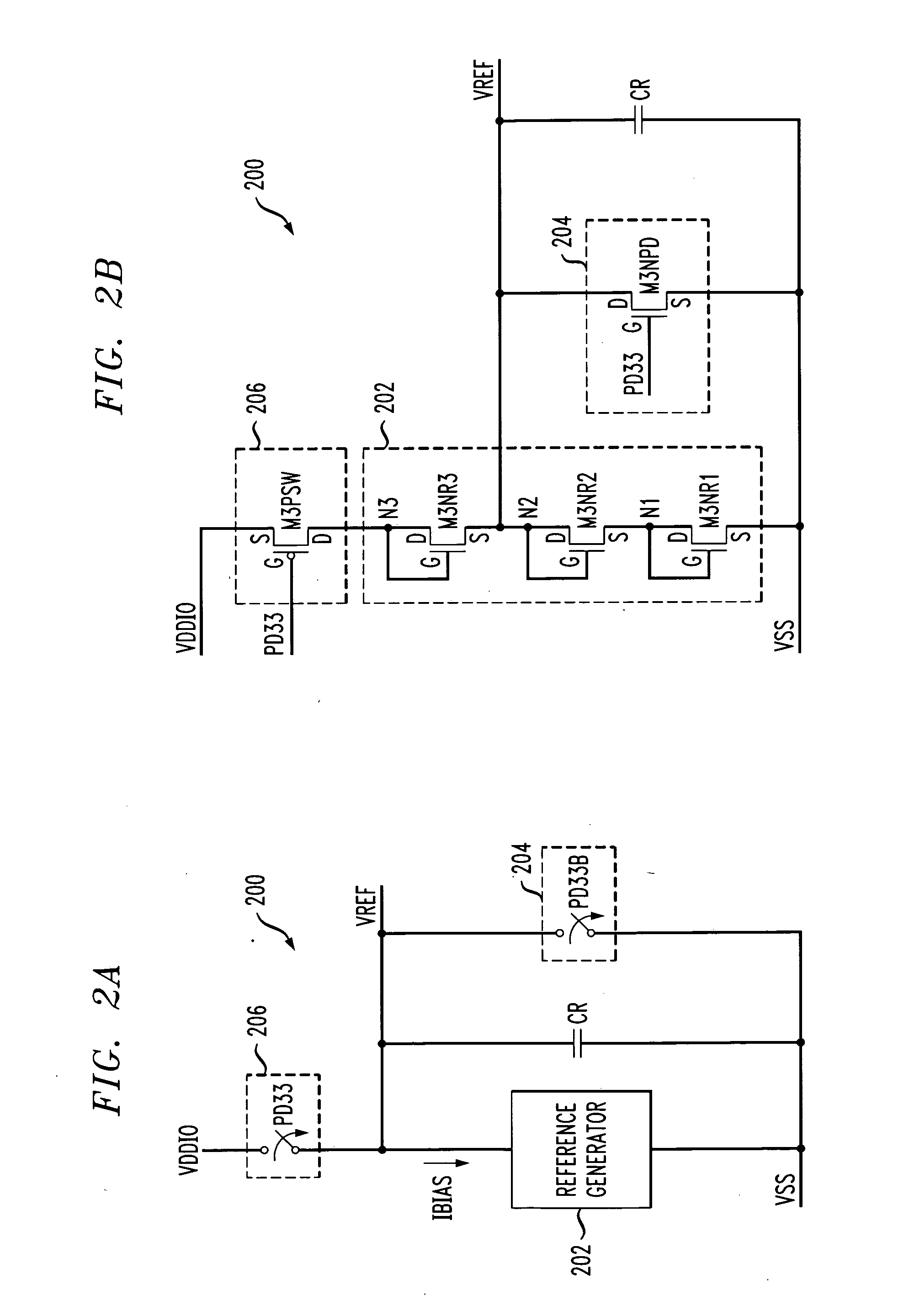Bias circuit having reduced power-up delay
- Summary
- Abstract
- Description
- Claims
- Application Information
AI Technical Summary
Benefits of technology
Problems solved by technology
Method used
Image
Examples
Embodiment Construction
[0017] The present invention will be described herein in the context of illustrative bias circuits. It should be understood, however, that the present invention is not limited to these or any other particular bias circuit arrangements. Rather, the invention is more generally applicable to techniques for reducing DC current consumption in a bias circuit without significantly increasing power-up delay in the bias circuit. Furthermore, although described herein in the context of a voltage level translator circuit application, the techniques of the present invention may be extended to essentially any application requiring a bias circuit having reduced current consumption and without any significant power-up delay. Although implementations of the present invention are described herein with specific reference to P-type metal-oxide semiconductor (PMOS) and N-type metal-oxide semiconductor (NMOS) transistor devices, as may be formed using a complementary metal-oxide semiconductor (CMOS) fab...
PUM
 Login to View More
Login to View More Abstract
Description
Claims
Application Information
 Login to View More
Login to View More - Generate Ideas
- Intellectual Property
- Life Sciences
- Materials
- Tech Scout
- Unparalleled Data Quality
- Higher Quality Content
- 60% Fewer Hallucinations
Browse by: Latest US Patents, China's latest patents, Technical Efficacy Thesaurus, Application Domain, Technology Topic, Popular Technical Reports.
© 2025 PatSnap. All rights reserved.Legal|Privacy policy|Modern Slavery Act Transparency Statement|Sitemap|About US| Contact US: help@patsnap.com



